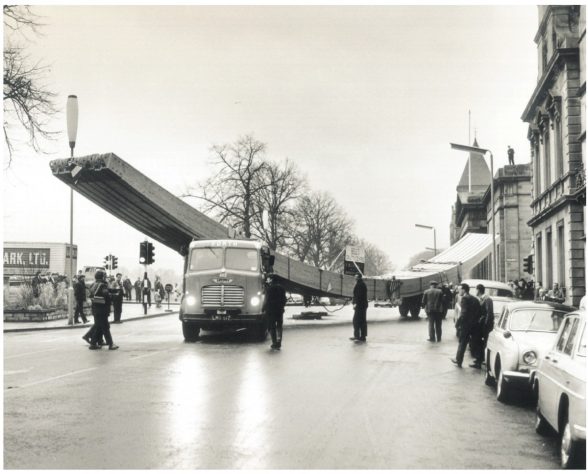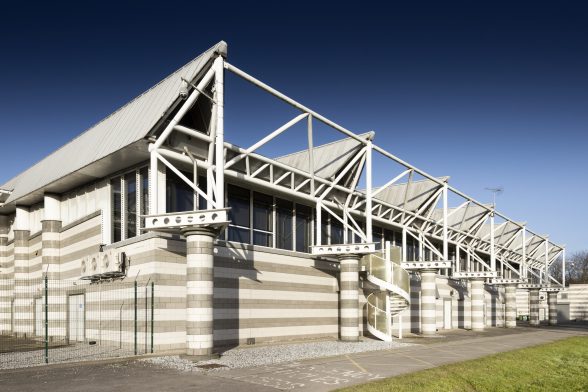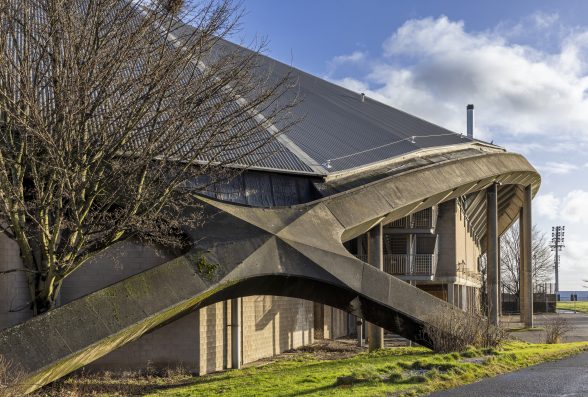This website uses cookies
This website uses cookies to enable it to function properly and to analyse how the website is used. Please click 'Close' to accept and continue using the website.



Image credit: Fraser Band
C20 Society is celebrating the fourth Leisure Centre to be listed as a result of our national campaign, and the first example to be designated in Scotland, at Category B.
Bell’s Sports Centre (formerly known as the Gannochy Trust Sports Complex) in Perth was designed in 1966-68 by John B. Davidson of Perth Town Council architects, under the leadership of David Cockburn, and stands at the western edge of the city’s North Inch park. When the centre opened, it was billed as the largest laminated timber dome in Britain, its 220ft span only being surpassed by London’s Millennium Dome in 1999. Despite comparable designs elsewhere – like Swindon’s Oasis and the Walker ‘Lightfoot’ Dome – Bell’s Sports Centre is unique, in being the only domed sports facility in Scotland.

Image credit: Small City, Big Personality
The structure of Bell’s contains 36 timber arch ribs, supporting a 67-metre-long roof, 15 metres tall at its apex, culminating in a raised ventilation oculus. This provides more than 3,000m² of space for a running track and multi-use community sports, including tennis, badminton, basketball, gymnastics, indoor football and many more. During construction, parts of the city came to a standstill as the giant arches for the dome started to arrive by road, with streets closed and a police escort provided. The opening of the centre was delayed after a fire on 18 February 1968 badly damaged the structure, eventually opening in October of that year.
The centre is still in active use today, clocking up an estimated 12 million visitors since its opening 50 years ago. Over time the complex has expanded to include squash courts and a coaching hall, and the external cladding on the dome has been replaced a number of times, yet it remains the striking centrepiece and a feature worthy of recognition.

Image credit: Small City, Big Personality
C20 Leisure Centre Campaign
The designation for Bell’s follows those in England for Doncaster Dome (Faulkner-Brown Hendy Watkinson Stonor, 1986-89), Bradford’s Richard Dunn Sport Centre (Trevor Skempton, 1974-78) Swindon’s Oasis Leisure Centre (Gillinson Barnett & Partners, 1974-75). All listed at Grade II following applications from C20 Society as part of our ongoing Leisure Centres Campaign.
Leisure centres are places of community identity and an intensely evocative part of our shared social heritage: flumes, verrucas, palm trees, the smell of chlorine, the sound of laughter – this is the backdrop to childhood experiences and families at play. Yet they’re also some of the most architecturally innovative structures of the late twentieth century, combining environmentally controlled environments with soaring engineering and playful pop imagery. Is there any other building-type that’s as wildly varied and downright eccentric? Space-age geodesic domes, diamond glazed pyramids, castellated forts, brutalist elephants and Moorish postmodern palaces are just a few of the highlights of this idiosyncratic genre.
Some key examples remain from the 1970s boom in publically-funded municipal leisure centres, others are playful evolutions on the theme from more recent decades, while the exotic continental import of Center Parcs signalled a later shift to a packaged holiday experience. Most were designed around a free-form tropical pool, others focussed on hard courts and recreational sports. All are underappreciated and unexamined buildings in need of our support.

Image credit: Historic England

Image: Jonathan Taylor

Image credit: Historic England

Become a C20 member today and help save our modern design heritage.